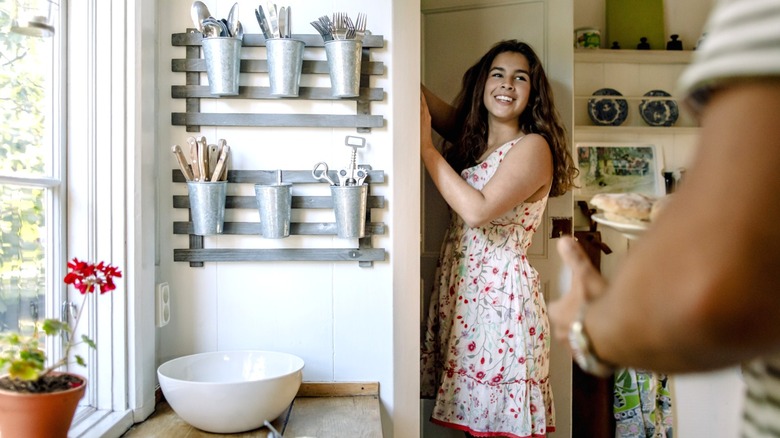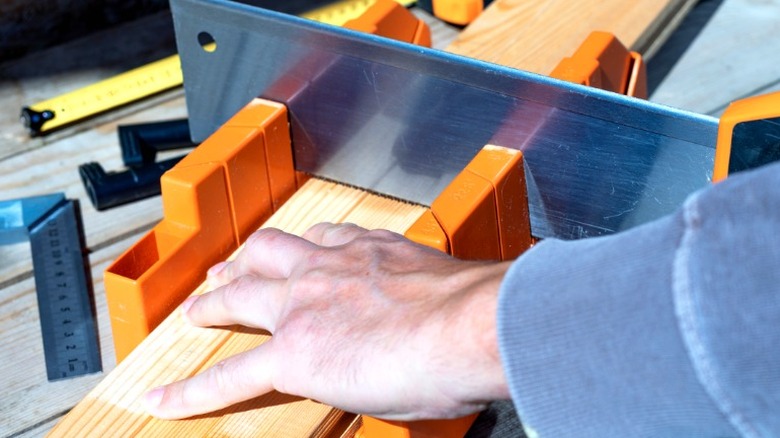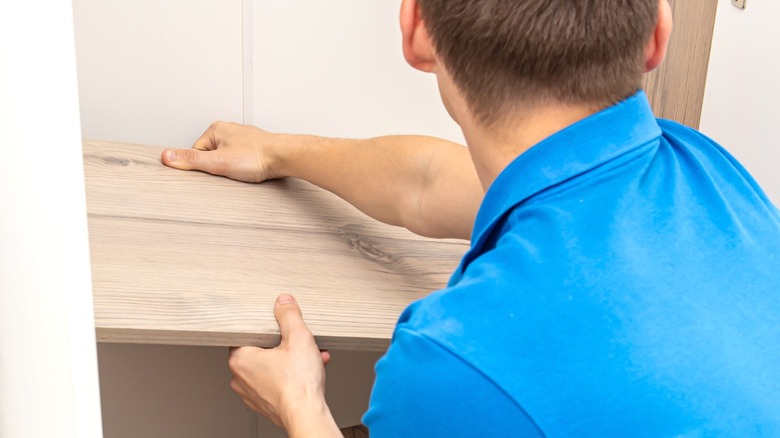Turn A Broom Closet Into A Functional Pantry For Your Next Home Renovation
We may receive a commission on purchases made from links.
As useful as a broom closet may be for many homeowners, sometimes our setups and routines just don't make it sensible for our needs. If you're stuck with an under-utilized broom closet, it might be time to redefine its purpose. After all, broom closets are often convenient to the kitchen, so why not give it an all-new function as extra pantry space? Functional and spacious pantries are becoming more and more crucial in the modern home, and it only takes a simple conversion to turn your spare utility closet into an ultra-valuable asset with this budget-friendly kitchen upgrade.
For pure efficiency and functional purposes, one purchase may solve most of your pantry problems. Measure the width, height, and depth of your closet. Then, shop for wire shelving units that will fit the space like the REGILLER 5-Wire Metal Storage Rack. It's quick and simple to construct, and you won't cause any damage to the surrounding closet, which is a great solution for renters.
Otherwise, you can install adjustable metal shelving to the wall. A track secures to studs while hanging standards hold the adjustable hanger bars and shelves. As your needs shift, you can move the shelves up and down to change the clearance.
Going an extra step, you can customize your pantry to make it more functional and attractive. Building and installing wooden shelves is simple for any DIYer, and paint, stain, and other decorative options allow you to make your kitchen more aesthetic and cohesive.
How to convert your broom closet into a pantry
The main addition to consider when changing your broom closet to a pantry is shelving. While you may have a shelf toward the top of the closet, you'll more than likely have a bare template to fill.
To make your shelves, use wood boards (e.g., ¾-inch plywood) for the surface and narrow slats, such as 1-by-2 boards, for supports. The slats will attach horizontally to the wall studs via wood screws to create a ledge on the left, right, and back walls that the shelf will rest on. Since they run along the wall, the supports will pleasantly stay out of the way to give you maximum storage space on each shelf.
Measure and install the support slats in the pantry according to your desired shelf depth and height. Generally, shallower shelves are ideal for the pantry so you can see everything clearly. It's especially important on higher shelves that need to provide easier access. Having the extra space will also allow for a door-hanging solution, such as hanging baskets, that will take up room in the closet when the door is closed.
Plan the distance between the shelves based on what you want to store, leaving an extra couple of inches above the tallest items for easier access. Your bottom shelves should typically have more clearance to hold your heaviest items, while the middle shelves can be closer to hold more of your frequently used small food packages and ingredients.
Making the shelves and finishing your pantry conversion
With your shelf supports installed, you may want to paint the inside of the closet before installing the shelves. Give it a fresh color to match your kitchen, painting the slats the same color to make them more subtle. You can then focus on fitting your shelves. Since the closet walls are often not perfectly square, you may have to scribe the shelves for a proper fit. Measure the width of the back wall where the shelf will sit on the slats, and check the angle of the left and right corners using an angle finder. Transfer the measurements and angles to your boards, and cut them to size with your table saw or miter saw. Check the angle at every set of slats, as there may be minor deviations you should adjust to make each shelf fit perfectly.
Before installing your cut shelves, sand them smooth. Consider a stain, paint, or sealant to make your shelves stand out in the cabinet and stay protected from damage. You can also apply other pantry shelf ideas to transform your kitchen storage, such as lipped shelves to keep items from falling off and behind-the-door hanging racks to keep your most-needed ingredients easy to find.


